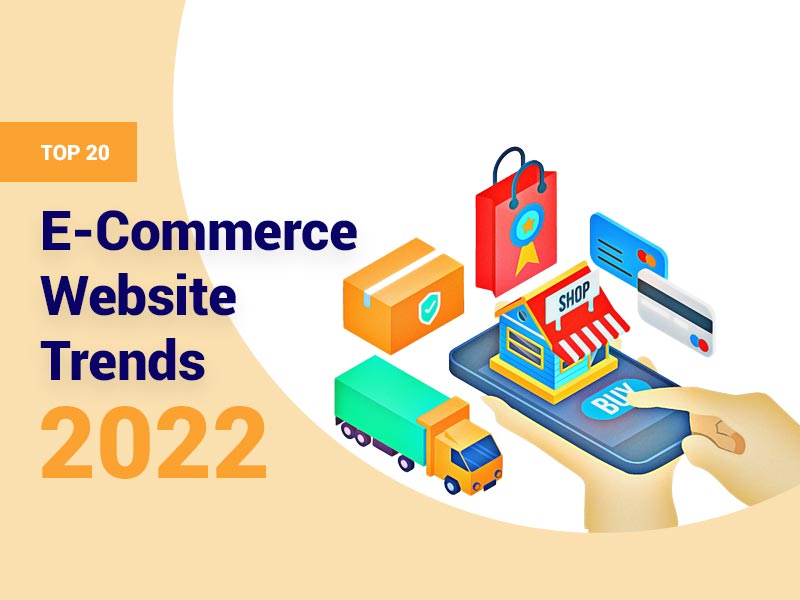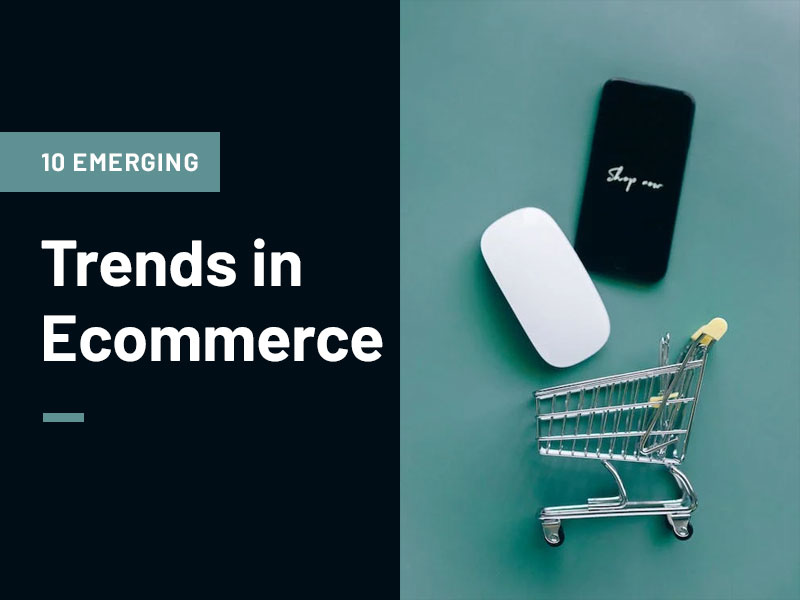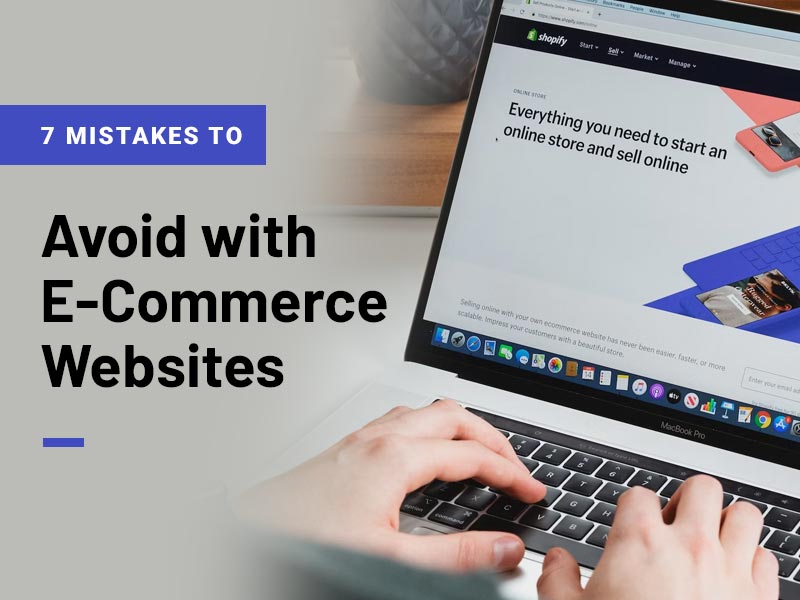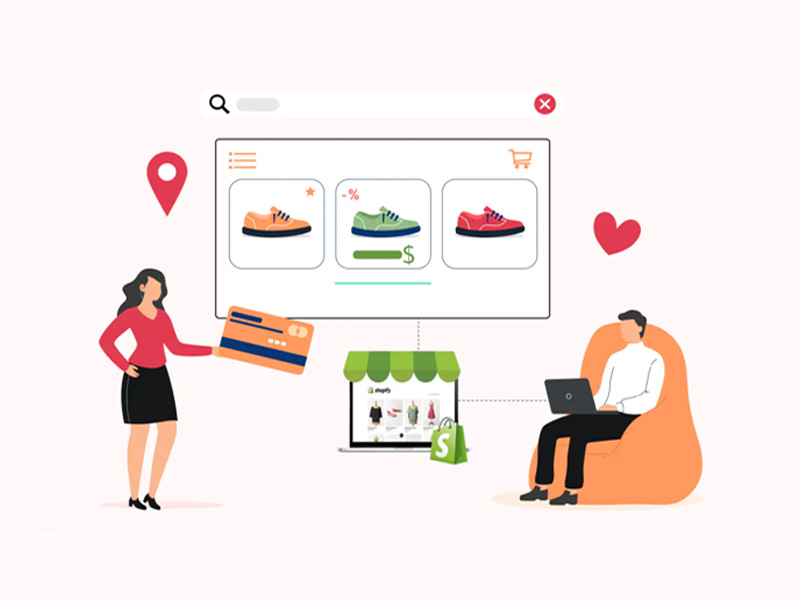E-commerce — the buying and selling of products online — is rapidly becoming the primary shopping method for buyers. Companies that want to stand out in this crowded marketplace must stay ahead of the market trends. This article discusses e-commerce trends related to website features and design. Be sure to optimize your e-commerce site to take advantage of these exciting and potentially lucrative trends!
Also read: Top 15 Ecommerce Fashion Websites in World
Top E-Commerce Website Trends
1. Voice Shopping
Voice e-commerce is becoming increasingly popular, with sales expected to reach $19.4 billion in 2023. This simple, time-saving way to purchase product subtilizes voice recognition technology to direct the customer through the shopping process without the need to browse or type commands. Consumers shop via voice and a smart device such as a smartphone, tablet or speaker. Voice assistants respond to the user’s search by asking questions that narrow the search by brand, size, color and/or other relevant parameters.
2. Chatbot Service
Artificial intelligence-powered chatbots offer an alternative way for customers to contact a company’s customer service department. For the uninitiated, chatbot software applications communicate in real-time with human customers via text or voice. Conversational chatbots are programmed with the answers to specific questions and provide 24/7 customer service. By integrating a wordpress chatbot ai feature (if that is the platform you are building your website on), you can reduce your customer service workload while improving the user experience.
3. Mobile Commerce
Mobile commerce is growing quickly so be sure to optimize your website for mobile users. Mobile e-commerce (or m-commerce) sales in the U.S. grew by 15.2% in 2021 to $359 billion, and sales are projected to nearly double between now and 2025. 2 Make your customer’s mobile shopping experience easy and engaging if you want to increase sales. Consider sending push notifications and text messages to users’ smartphones to keep them interested.
4. Payment Options
How many ways are there for customers to pay on your website? Users may leave your site during the purchase process if they cannot use their preferred payment methods. Expanding your payment options will likely increase loyalty and trust, which lead to more sales. Think about implementing buy now/pay later financing and one-click purchasing.
5. Augmented Reality
Engage customers and increase sales by adding features that allow users to see how your products fit into their spaces. Customers use their phone or laptop camera and your website to visualize their room or body with your product in or on it. Augmented reality is especially useful for businesses that sell furniture, rugs, eyeglasses, clothing and more.
6. Subscription Programs
A subscription shopper becomes a loyal customer who frequently revisits your site. Subscriptions and loyalty programs tend to retain customers because they provide products subscribers like as well as exclusive offers and savings. Subscriptions create positive relationships between businesses and their customers, who then become the company’s best brand promoters.
7. Upselling/Cross-Selling
Artificial intelligence and machine learning can fairly accurately predict what individual customers might want to buy based on their browsing histories and past purchases. Retailers with the capability to offer shoppers complementary products or product upgrades are well-positioned to increase sales.
8. Personalization
Customers want to feel appreciated. One way to do that is to personalize the shopping experience for each visitor as he or she moves from browsing to shopping cart to purchase. Show your customers that you’re paying attention by opening their search results with products they looked at previously, recommending products tailored to their searches, creating lists of the most popular items on your site and in their locations, retargeting via pop-ups that match each shopper’s browsing behavior, and emailing to remind shoppers about their abandoned carts.
9. Omnichannel Experience
Today’s consumers expect a seamless experience regardless of the device they are using at any given moment. This requires a consistent experience across your brand. Selling on multiple channels while providing a cohesive experience via smartphone, desktop or shop online/pick-up in store helps to increase sales and improve customer loyalty.
10. B2B E-Commerce
B2B customers are transitioning from shopping via detailed print catalogs and long sales calls to researching and purchasing products online. If you haven’t done so already, be sure to create an online catalog website so prospects can shop like they do for consumer products. Making the B2B shopping experience faster and easier increases sales volume and improves customer satisfaction.
11. Social Commerce
Your customers are browsing and shopping on social media; shouldn’t your products be there, too? U.S. sales through social media are anticipated to reach $79.6 billion by 2025. You’ll want to prepare by developing a coherent social media strategy, setting a sufficient budget, creating engaging content, partnering with influencers, streaming videos to highlight certain products, and placing paid ads on various social media platforms.
12. Green Commerce
Consumers increasingly prefer to purchase “green” brands and products. In fact, 78% of people are more likely to purchase a product that is clearly labeled as environmentally friendly. 4Businesses would be smart to make products and custom packaging from eco-friendly materials to the extent possible (and label them as such), and to support green causes. Plus, ask customers to combine their purchases to eliminate the use of excess packaging and reduce the number of truck deliveries.
Trending E-Commerce Website Design Features
13. Original Layouts
Widely available design templates have made numerous websites look alike and, frankly, boring. Custom designs, especially those with original themes, are more exciting to view and scroll through, which increases user engagement, identification with the brand and, ultimately, sales.
14. Great Photos
As the saying goes, “A picture is worth a thousand words”. Invest in professional, high-quality photography to highlight product details and showcase product use in typical situations. Attractive backgrounds, colors and shapes may make your photos artistic, but remember that the point is to let customers clearly see products and understand the features that they cannot touch.
15. More Videos
Consumers are viewing more video content than ever. Videos are not only engaging, but they also educate consumers about a product, show them how others are using it, demonstrate the company’s expertise and tell the brand story. Videos help consumers make buying decisions, build relationships between sellers and buyers and create a positive experience. Add videos to your website’s home and product pages — and take advantage of the fact that 72% of customers prefer to learn about a product by watching a video vs. reading about it.
16. Mood Creation
Think carefully about the use of photos, sound effects, animation, content, fonts, colors and gradients when designing your website. All these elements should work together to set the right mood for selling your product. Are you selling luxury items, delicious food or high-end clothing? Your website should create the appropriate mood for your audience. Make your design relevant to your products and brand, and consistent throughout the website.
17. Engaging Animation
Keep visitors interested, entertained and on your site longer with creative animation. Use animation to direct customers down the page, guide them through a task, draw attention to certain products or parts, indicate errors made in filling out forms and generally make your website memorable. Be careful not to overdo; animation can slow website loading times, negatively impacting performance and consumer patience.
18. Lines and Shapes
Create a unique brand identity while adding interest to your website with the shrewd placement of lines, grids, and geometric and organic shapes. Use lines and shapes to guide users through your pages; frame a particular product, piece of text or part of a page; highlight calls to action; and/or simply make your website look amazing — and different from your competitors’ websites.
19. Product Features
“Hiding” product features in a long block of text can be frustrating to the user. Make your product’s benefits and features stand out by integrating them into your design. Highlight the product’s details in a geometric or nonorganic shape, put a nice background color behind the text, and/or experiment with large, fun fonts.
20. Vertical Menus
At the end of 2021, 47% of users in the U.S. accessed websites via smartphones. When the great majority of users accessed the web through desktop and laptop computers, aligning menus horizontally made sense. Horizontal menus are not as useful on small devices, however, even when the site is responsive. By removing the obstruction that a drop-down horizontal menu causes on a page, a side vertical menu makes e-commerce site exploration easier — not just on phones, but also on desktops and laptops. Or maximize space by combining a horizontal menu for primary navigation links with a side menu for secondary links.
Now you know what’s trending for websites, but do you know how to go about updating your e-commerce website? Consider talking to a company that specializes in website design and development, and let the professionals prepare your site to compete in the crowded — yet potentially profitable — Internet marketplace.







